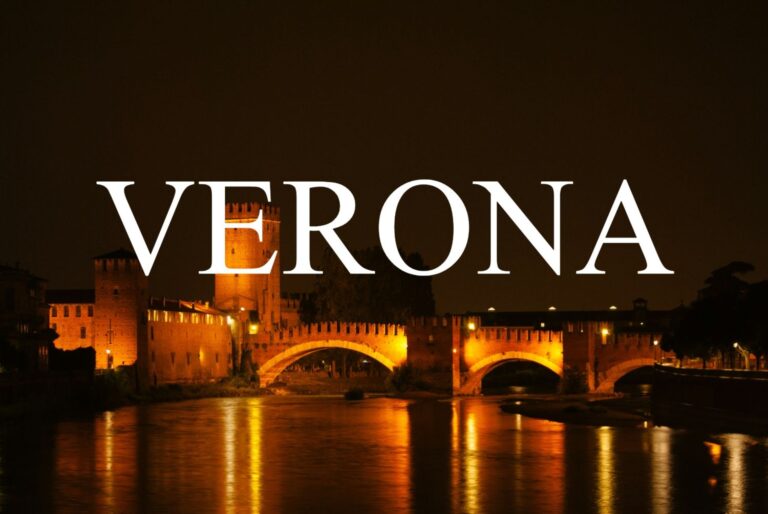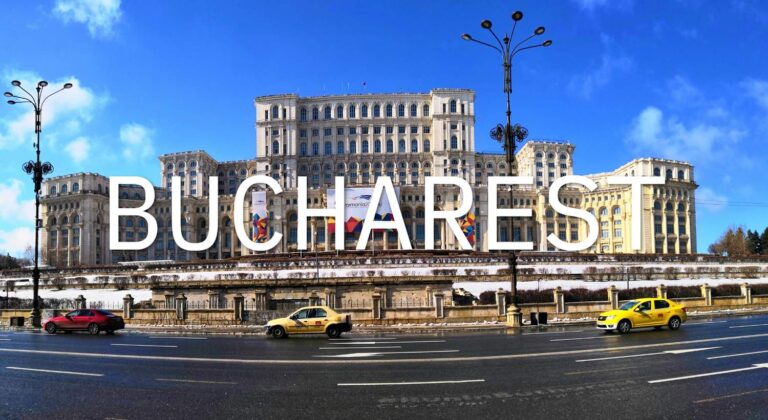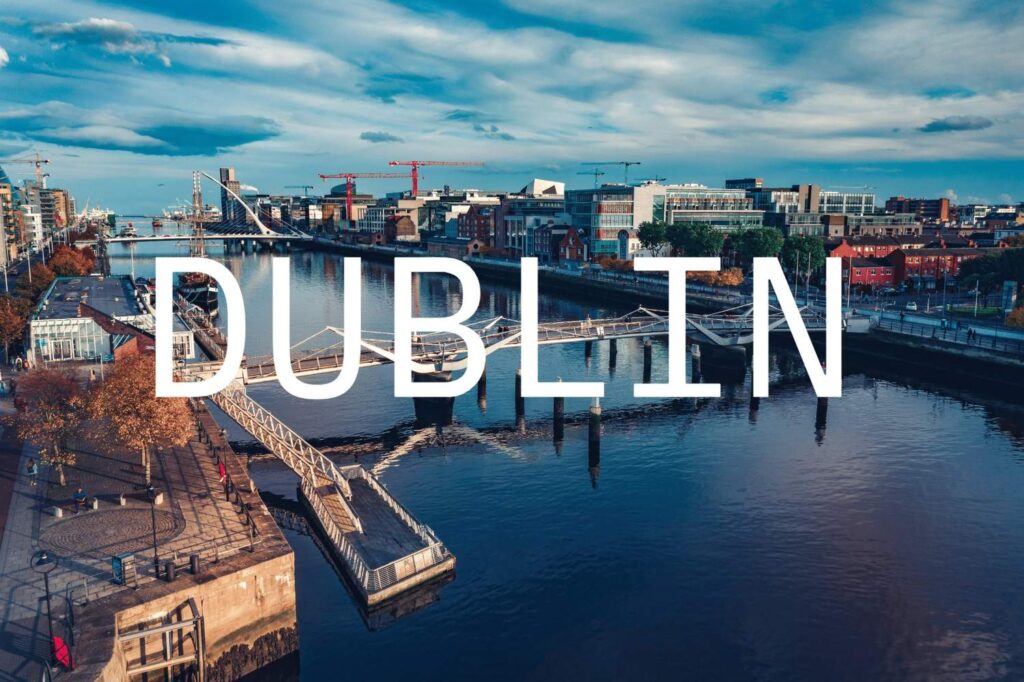
Dublin, the spirited capital of Ireland, is a city that effortlessly weaves together centuries of rich history with a lively contemporary culture. From the medieval grandeur of Dublin Castle and the historic Trinity College—home to the famed Book of Kells—to bustling streets filled with friendly locals, this city invites visitors to experience its unique blend of tradition and modernity.
Stroll through charming neighborhoods like Temple Bar, where colorful pubs echo with the sounds of traditional Irish music, or relax in the vast green expanses of Phoenix Park and St. Stephen’s Green. Dublin’s vibrant arts scene, world-class museums, and thriving food culture offer something for every traveler—from history buffs and literature lovers to foodies and music enthusiasts.
Whether you’re savoring a perfectly poured pint of Guinness in a cozy pub, exploring iconic landmarks, or simply soaking up the welcoming Irish spirit, Dublin promises an unforgettable adventure that feels both timeless and fresh. This city’s warmth and energy will capture your heart long after you’ve left.
🗓️ Best Time to Visit Dublin
- 🌷 Spring (March–May): Mild weather, blooming parks, and fewer crowds. St. Patrick’s Day in March is a lively highlight!
- ☀️ Summer (June–August): Warmest time with long daylight hours—ideal for outdoor festivals and sightseeing.
- 🍂 Autumn (September–October): Crisp air and beautiful fall colors, plus cultural events.
- ❄️ Winter (November–February): Cooler and quieter, but cozy pubs and festive Christmas markets make up for it.
💶 Currency & Travel Essentials
- Currency: Euro (€)
- Exchange Rate (June 2025): 1 USD ≈ 0.92 EUR
- Language: English (Irish Gaelic also official, but less commonly spoken)
- Transport: Buses, trams (Luas), and trains are efficient; city center is very walkable.
- Average Daily Budget:
- Budget: €50–80
- Mid-range: €90–150
- Luxury: €200+
💡 Tip: Dublin Pass offers free entry to many attractions plus public transport discounts.
🍀 10 Best Places to Visit in Dublin
Trinity College & The Book of Kells

Photo by Sean Kuriyan on Unsplash
At the heart of Dublin lies Trinity Colleg, Ireland’s oldest and most prestigious university. Beyond its academic reputation, it’s world-renowned for housing the Book of Kells, a breathtaking illuminated manuscript created by Celtic monks over 1,200 years ago. A visit to Trinity College offers a unique blend of history, culture, and awe-inspiring architecture that attracts scholars, book lovers, and curious travelers alike.
🌟 Highlights of Trinity College & The Book of Kells
• 📖 The Book of Kells Exhibition
View this magnificent 9th-century manuscript, considered one of the finest examples of medieval art in the world. The exhibit provides insight into its creation, symbolism, and historical context.
• 📚 The Long Room
Step into one of the most beautiful libraries on the planet. The Long Room houses over 200,000 of Trinity’s oldest books beneath its soaring barrel-vaulted ceiling and is a true haven for bibliophiles.
• 🏛️ Historic Campus
Stroll through the cobbled pathways and elegant Georgian buildings of the Trinity College campus, founded in 1592. It’s a peaceful retreat in the middle of bustling Dublin.
• 🎓 Academic Legacy
Discover the alma mater of notable figures such as Jonathan Swift, Samuel Beckett, and Oscar Wilde.
🚗 How to Get There
• By Foot:
Located in central Dublin, Trinity College is easily walkable from popular areas like Grafton Street and Temple Bar.
• By Public Transport:
Accessible via numerous Dublin Bus routes and Luas (light rail) stops nearby.
🕒 Visitor Information
• Opening Hours:
Typically open daily from 8:30 AM to 5:00 PM (Long Room access may vary by season). Last admission to the Book of Kells is usually 30–60 minutes before closing.
• Recommended Visit Duration:
Plan for 1.5 to 2 hours to explore the exhibition, Long Room, and campus grounds.
💡 Travel Tips
• 🎟️ Book Tickets in Advance:
This is one of Dublin’s most visited attractions—booking ahead online saves time and ensures entry, especially in peak season.
• 📷 Photography Rules:
No photography is allowed inside the Book of Kells exhibition, but photos are welcome in the Long Room.
• 👟 Wear Comfortable Shoes:
The campus covers a good amount of ground, including cobbled paths.
• 🧭 Explore Nearby:
After your visit, explore nearby attractions like the National Gallery of Ireland, Merrion Square, and St. Stephen’s Green.
A visit to Trinity College and the Book of Kell is a journey into Ireland’s cultural and intellectual heart. The exquisite manuscript and the iconic Long Room offer an unforgettable experience steeped in artistry, history, and academic heritage. It’s a must-see in Dublin that resonates with travelers of all ages.
Guinness Storehouse
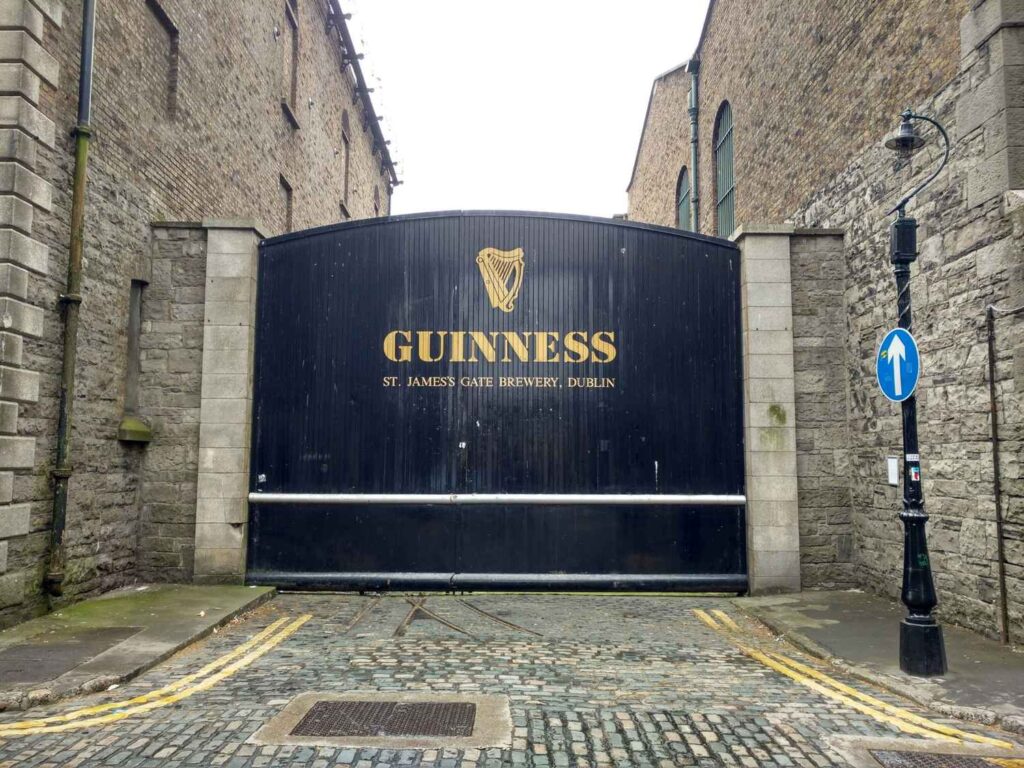
Photo by Andrew Meßner on Unsplash
Located in the heart of Dublin at St. James’s Gate Brewery, the Guinness Storehouse is one of Ireland’s most visited attractions and a must-see for fans of the world-famous stout. More than just a brewery tour, the Storehouse is an immersive, seven-story experience that tells the story of Guinness—its history, brewing process, global influence, and cultural legacy—culminating in a rooftop pint with panoramic city views.
🌟 Highlights of the Guinness Storehouse
• 🏛️ The Atrium Shaped Like a Pint Glass
The building’s central atrium is designed in the shape of a giant pint glass. If filled, it would hold 14.3 million pints of Guinness!
• 🍺 Learn the Brewing Process
Explore how Guinness is made—from water, barley, hops, and yeast to fermentation and maturation—accompanied by multimedia displays and historic artifacts.
• 🧴 The Tasting Experience
Enter a sensory room to sample Guinness like a connoisseur. You’ll learn to appreciate the aromas and flavors in every pour.
• 📜 History & Advertising Floors
Discover over 260 years of brand history, including iconic advertising campaigns and the legacy of founder Arthur Guinness.
• 🍻 The Guinness Academy
Learn how to pour the perfect pint of Guinness—certification included!
• 🌆 Gravity Bar
The experience ends on the top floor with a complimentary pint (or soft drink) and a 360° view over Dublin from the Gravity Bar.
🚶♂️ How to Get There
• By Foot:
Located about a 20-minute walk from Dublin’s city center.
• By Bus or Tram:
Take the LUAS (red line) to James’s or take Dublin Bus routes 123, 13, or 40.
• By Tour:
Many hop-on-hop-off buses include the Guinness Storehouse as a stop.
🕒 Visitor Information
• Opening Hours:
Daily, typically from 9:30 AM to 7:00 PM (last entry 5 PM); hours may vary seasonally.
• Recommended Visit Duration:
1.5 to 2 hours for the full experience, more if enjoying drinks or the gift shop.
💡 Travel Tips
• 🎟️ Book in Advance:
Popular time slots sell out quickly, especially in peak season.
• 🎁 Visit the Gift Shop:
Find exclusive Guinness merchandise including glassware, apparel, and limited-edition beers.
• 🥘 Dine at the Storehouse:
The on-site restaurants offer hearty Irish dishes made with Guinness as a key ingredient.
• 📸 Bring a Camera:
The Gravity Bar offers some of the best views over Dublin.
The Guinness Storehouse is more than a brewery—it’s an experience that celebrates Ireland’s most iconic drink with pride, creativity, and storytelling flair. Whether you’re a beer enthusiast or just curious about Irish culture, it’s a lively, informative, and deliciously memorable stop in Dublin. Sláinte!
Dublin Castle
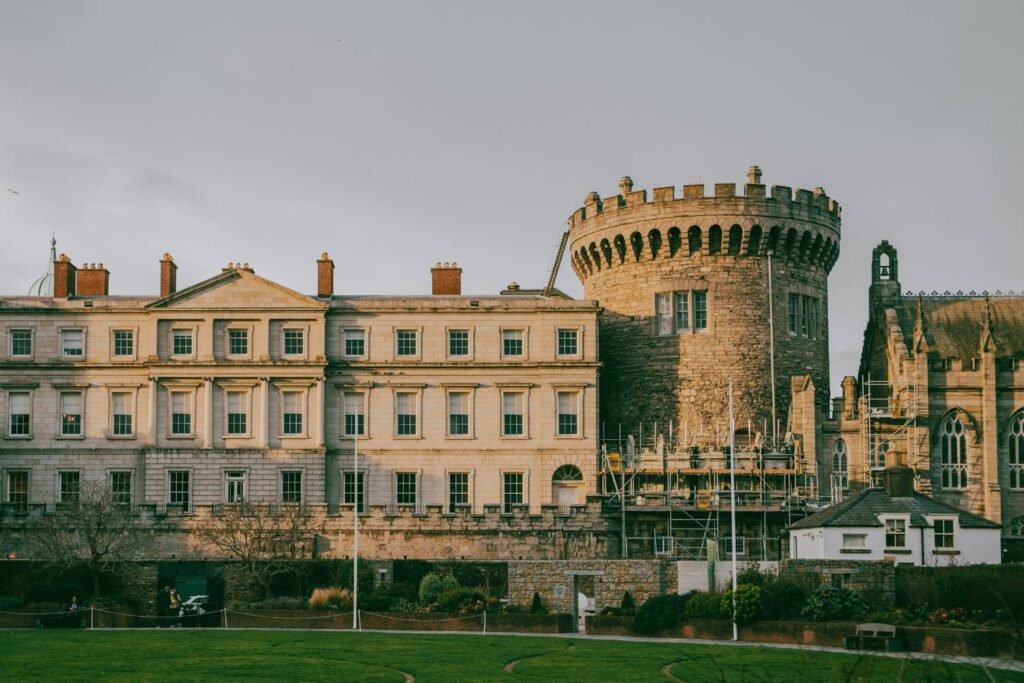
Photo by Alexandra Mitache on Unsplash
Situated in the historic core of Ireland’s capital, Dublin Castle stands as a powerful symbol of the country’s rich and complex past. Once the seat of British rule in Ireland for over 700 years, the castle has transformed into a vibrant government complex and major tourist attraction. A walk through Dublin Castle offers a deep dive into Ireland’s journey from colonial rule to independence, surrounded by striking architecture, elegant state rooms, and centuries of layered history.
🌟 Highlights of Dublin Castle
• 👑 State Apartments
Explore the lavishly decorated rooms still used for official functions today, including presidential inaugurations and state banquets. The intricate chandeliers, tapestries, and antique furnishings showcase 18th- and 19th-century grandeur.
• 🏛️ The Chapel Royal
Admire the stunning Gothic Revival chapel, complete with finely carved interiors and a collection of coats of arms from former Lord Lieutenants of Ireland.
• 🏺 The Medieval Undercroft
Descend beneath the castle to see remnants of Viking and Norman structures, including parts of the original medieval curtain wall and Powder Tower.
• 🖼️ Chester Beatty Library (on-site)
Don’t miss this adjacent museum housing one of the world’s finest collections of manuscripts, books, and religious texts from across Asia, the Middle East, and Europe.
• 🌳 Dublin Gardens
Relax in the peaceful Dubh Linn Garden, once the site of the “black pool” that gave Dublin its name.
🚗 How to Get There
• By Foot:
Located in Dublin city center, just a short walk from Temple Bar, Grafton Street, and Trinity College.
• By Public Transport:
Served by multiple Dublin Bus routes and near Luas stops (St. Stephen’s Green or Jervis).
🕒 Visitor Information
• Opening Hours:
Open daily from 9:45 AM to 5:45 PM (last admission around 5:15 PM). Hours may vary on holidays.
• Recommended Visit Duration:
Allow 1.5 to 2 hours to fully experience the tour and explore the grounds.
💡 Travel Tips
• 🎟️ Book a Guided Tour:
To access the medieval undercroft and get a richer historical context, opt for the guided experience.
• 📷 Bring a Camera:
Photography is permitted in most areas; don’t miss the ornate ceilings and picturesque gardens.
• 👟 Wear Comfortable Shoes:
You’ll be walking across uneven stone and steps, especially in the undercroft.
• 🧭 Pair With Nearby Attractions:
Combine your visit with nearby sights like Dublinia, Christ Church Cathedral, or St. Patrick’s Cathedral.
Dublin Castle is a captivating mix of architectural beauty, political heritage, and cultural depth. Whether you’re a history enthusiast or a casual traveler, it provides a meaningful look into Ireland’s past and present, all in the heart of the capital. It’s more than just a castle—it’s a story of a nation.
St. Patrick’s Cathedral
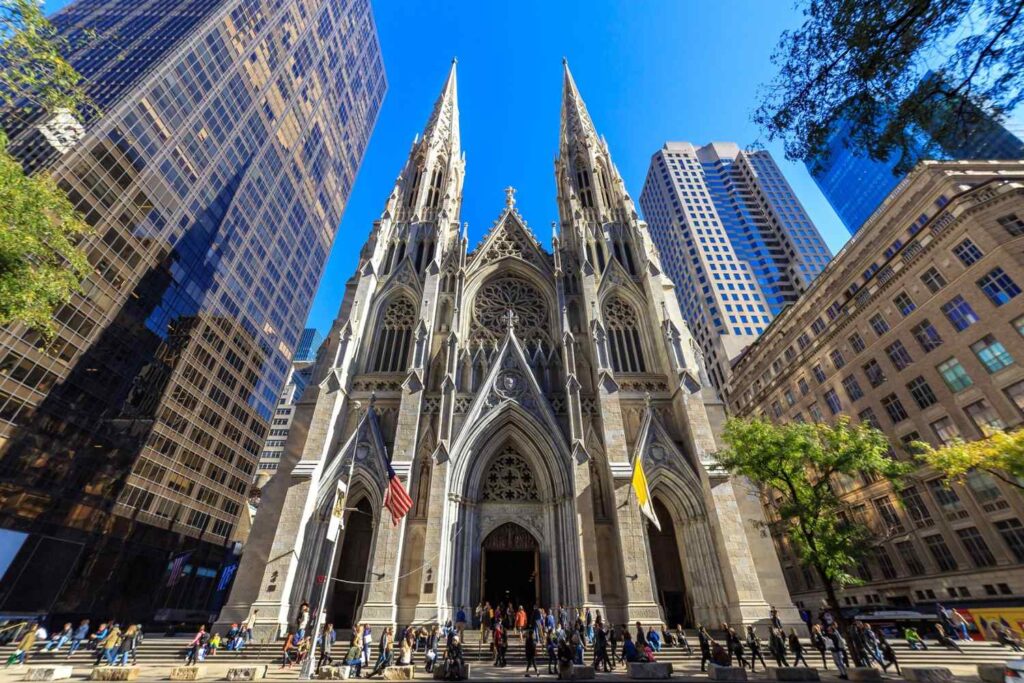
Standing majestically in the heart of Dublin, St. Patrick’s Cathedral is Ireland’s largest cathedral and one of its most significant historic landmarks. Founded in 1191 and built on the site where St. Patrick is believed to have baptized converts, this magnificent Gothic structure is not only a place of worship but also a museum of Irish history, culture, and literary legacy—closely tied to Jonathan Swift, who served as its dean.
🌟 Highlights of St. Patrick’s Cathedral
• 🏛️ Gothic Architecture & Interior Grandeur
Marvel at soaring vaulted ceilings, intricate stained-glass windows, and stone carvings that tell centuries-old stories of Irish Christianity and resilience.
• ✒️ Jonathan Swift’s Legacy
The author of Gulliver’s Travels is buried here. See his grave and personal artifacts, as well as memorials commemorating his time as Dean (1713–1745).
• 🎶 Choral Music Tradition
Home to one of Ireland’s oldest choirs, the cathedral still hosts regular choral evensong—an enchanting experience that connects past and present.
• 📜 Historical Exhibits
Explore artifacts, flags, and informative displays that document Irish history, the Reformation, and the cathedral’s evolution through the centuries.
• 🌳 St. Patrick’s Park
Adjacent to the cathedral, this tranquil park offers a perfect view of the cathedral’s grandeur with benches, fountains, and gardens for a reflective pause.
🚶♂️ How to Get There
• By Foot:
Located just a 10-minute walk from Dublin Castle and Grafton Street.
• By Bus:
Served by many Dublin Bus routes, including 49, 54A, and 56A.
• By Tram (LUAS):
Closest stop is St. Stephen’s Green (Green Line), followed by a short walk.
🕒 Visitor Information
• Opening Hours:
Typically open Monday–Saturday from 9:30 AM to 5:00 PM; Sunday hours vary due to services. Always check online before visiting.
• Recommended Visit Duration:
45 minutes to 1.5 hours, depending on interest in history and music.
💡 Travel Tips
• 🎟️ Buy Tickets in Advance:
Skip queues by booking online, especially during peak tourist seasons.
• 🎧 Use the Audio Guide or Join a Tour:
Enrich your visit with historical context and anecdotes.
• 🕯️ Attend a Service or Choral Performance:
Experience the cathedral’s acoustic beauty and spiritual ambiance.
• 📸 Photography Is Allowed (No Flash):
Don’t miss snapping the stunning nave and vibrant windows.
St. Patrick’s Cathedral is more than just a religious building—it’s a living monument to Ireland’s spiritual roots, literary genius, and enduring identity. Whether you’re drawn by faith, architecture, or curiosity about Irish culture, a visit here promises insight, inspiration, and a quiet moment of awe in the heart of Dublin.
Temple Bar District

🎶 Temple Bar – Dublin’s Lively Cultural Quarter Full of Music, Art, and Irish Charm
Located on the south bank of the River Liffey, Temple Bar is Dublin’s most famous and vibrant district. Known for its cobblestone streets, colorful pubs, live music, and artistic energy, this area is the beating heart of Dublin’s nightlife and cultural scene. Whether you’re sipping a pint of Guinness, exploring art galleries, or soaking up street performances, Temple Bar promises an unforgettable taste of Dublin’s soul.
🌟 Highlights of the Temple Bar District
• 🍻 Traditional Irish Pubs
Step into iconic venues like The Temple Bar Pub, The Porterhouse, or The Auld Dubliner for live traditional music, friendly crowds, and a warm Irish welcome.
• 🎭 Cultural Institutions
Visit the Irish Film Institute, Project Arts Centre, and Temple Bar Gallery + Studios for contemporary art, film screenings, and performances.
• 🎶 Street Music & Buskers
Wander the narrow lanes where talented musicians and performers add to the district’s lively atmosphere day and night.
• 🛍️ Boutique Shops & Markets
Browse independent shops, vintage stores, and artisan markets for local crafts, handmade jewelry, and Irish design.
• ☕ Cafés & Eateries
Enjoy a diverse food scene with everything from cozy cafés and gourmet burgers to upscale dining and international flavors.
• 📚 The Gutter Bookshop
Stop by this beloved independent bookstore offering a well-curated selection of Irish literature, fiction, and children’s books.
🚗 How to Get There
• By Foot:
Temple Bar is centrally located, just steps from Dublin Castle, Trinity College, and the Ha’penny Bridge.
• By Public Transport:
Easily accessible via Dublin Bus routes and Luas stops (Jervis or Trinity).
🕒 Visitor Information
• Best Time to Visit:
Afternoons for exploring shops and galleries; evenings for music, nightlife, and pub-hopping.
• Safety Tips:
Temple Bar is safe, but it gets crowded—especially at night—so keep an eye on your belongings.
• Recommended Visit Duration:
Spend a few hours soaking up the atmosphere, dining, and enjoying entertainment.
💡 Travel Tips
• 🎟️ Catch a Show:
Check event listings at venues like Smock Alley Theatre or the Button Factory for live performances and concerts.
• 🍺 Pubs Get Crowded:
Arrive early in the evening for a seat and a more relaxed vibe before it gets rowdy.
• 🎨 Visit in the Daylight Too:
Temple Bar’s charm isn’t only in its nightlife—its culture, architecture, and art scene shine in the daylight hours.
• 📸 Take Photos in Front of the Famous Red Pub:
The Temple Bar Pub is one of Dublin’s most photographed spots—perfect for your travel album.
Whether you’re craving live Irish music, contemporary art, or a fun night out, Temple Bar offers something for everyone. It’s where history, culture, and craic (Irish fun) collide in the most unforgettable way. A visit to Dublin wouldn’t be complete without a stroll—day or night—through this energetic and iconic district.
Phoenix Park

Covering over 700 hectares (1,750 acres), Phoenix Park is one of the largest enclosed public parks in any European capital. Located just a few kilometers west of Dublin’s city center, it’s a peaceful retreat and vibrant recreational space rich with wildlife, monuments, gardens, and historic buildings. Whether you’re cycling past free-roaming deer, visiting the President’s residence, or enjoying a picnic under ancient trees, Phoenix Park offers a perfect escape into nature, history, and relaxation.
🌟 Highlights of Phoenix Park
• 🦌 Wild Deer
A herd of fallow deer has lived in the park since the 17th century. Spotting them grazing in the fields is a favorite activity for locals and visitors alike.
• 🏛️ Áras an Uachtaráin (President’s Residence)
The official home of the President of Ireland, this elegant 18th-century mansion is surrounded by manicured gardens and open for free guided tours on Saturdays (advance booking required).
• 🐾 Dublin Zoo
One of the world’s oldest zoos (founded in 1831), Dublin Zoo is home to animals from across the globe and is a major family attraction within the park.
• 🏞️ People’s Flower Gardens
Beautifully maintained Victorian-style gardens with ornamental lakes, fountains, and colorful flowerbeds—perfect for a peaceful stroll or picnic.
• 🏛️ Wellington Monument
At 62 meters (203 ft), this towering obelisk is the tallest in Europe and commemorates the victories of the Duke of Wellington, who was born in Ireland.
• 🚴 Trails and Open Space
Walk, run, or rent a bike to explore miles of peaceful trails and open meadows. The park is also ideal for casual sports, kite flying, or just lying in the grass with a book.
🚶♂️ How to Get There
• By Foot/Bike:
Easily walkable or bikeable from the city center (about 20–30 minutes).
• By Bus:
Routes such as 37, 38, 39, and 46A stop at or near park entrances.
• By LUAS (Tram):
Red Line to Heuston Station, then a short walk.
• By Car:
Free parking is available, but it can fill up on weekends and sunny days.
🕒 Visitor Information
• Opening Hours:
Generally open 24 hours a day, though some areas (like Dublin Zoo or gardens) have specific hours.
• Recommended Visit Duration:
Anywhere from an hour-long walk to a full day of exploration.
💡 Travel Tips
• 🚲 Rent a Bike:
It’s the best way to cover more ground and discover quiet corners.
• 📅 Visit on a Weekend for Tours:
Áras an Uachtaráin and some other buildings offer weekend tours with prior reservation.
• ☀️ Bring Snacks or a Picnic:
There are cafés nearby, but the best experience is dining al fresco on a sunny lawn.
• 📸 Don’t Forget a Camera or Binoculars:
Wildlife, gardens, and historic architecture make it a photographer’s dream.
Phoenix Park is a rare gem in a European capital—wild yet peaceful, historic yet alive with activity. Whether you come for the deer, the zoo, the President’s house, or simply the serenity, Phoenix Park invites you to slow down and breathe deeply in one of Dublin’s most beloved green spaces.
Kilmainham Gaol
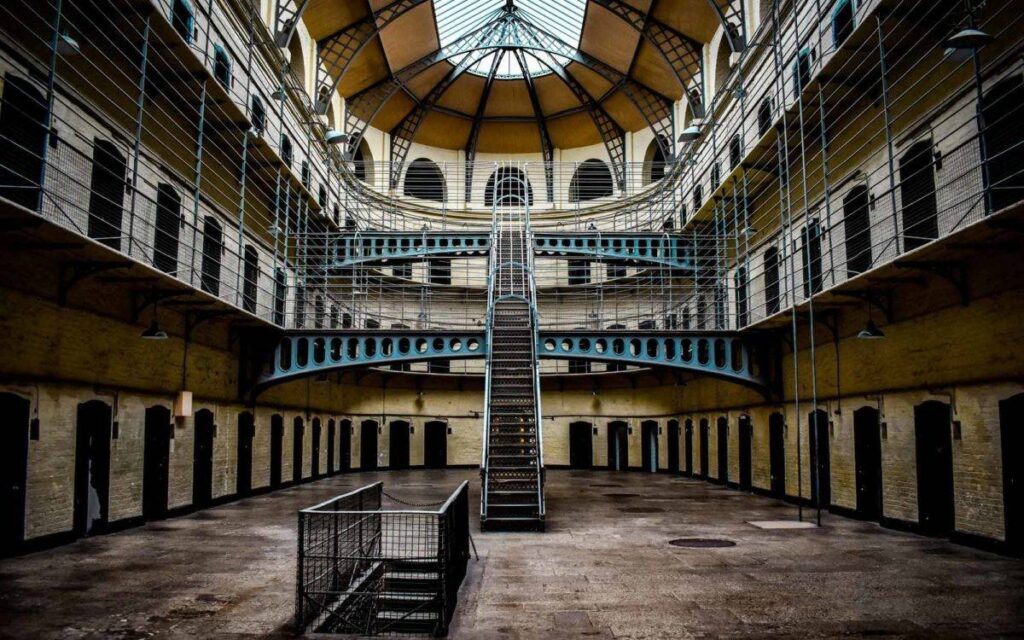
Located in Dublin’s western suburbs, Kilmainham Gao (pronounced “jail”) is not just a former prison—it’s a place where Ireland’s turbulent path to independence comes vividly to life. From the 18th century to the early 20th, this austere building held many of Ireland’s most prominent revolutionaries, and visiting it today is a deeply moving experience. Through haunting stories, powerful exhibits, and guided tours, Kilmainham Gaol offers a profound look at the human cost of colonial rule and the resilience of a nation.
🌟 Highlights of Kilmainham Gaol
• 🏛️ The Historic Prison Wings
Explore the cold stone cells and echoing corridors where political prisoners—such as leaders of the 1916 Easter Rising—were held and executed.
• 🕯️ Stonebreakers’ Yard
Stand in the exact place where 14 Easter Rising leaders, including Patrick Pearse and James Connolly, were executed by firing squad. This solemn site is one of the most emotionally powerful places in Ireland.
• 🖼️ Interactive Museum Exhibits
The museum features personal letters, photographs, and artifacts that offer insight into the lives of the inmates and the broader context of Irish nationalism.
• 🎥 Guided Tours with Expert Storytelling
All visits include a guided tour led by knowledgeable staff who bring history to life with stories of resistance, sacrifice, and nation-building.
• 🎬 Famous Film Location
Recognize the dramatic Victorian East Wing from films like In the Name of the Father and Michael Collins.
🚗 How to Get There
• By Public Transport:
Accessible by Dublin Bus (routes 13, 40, 123) and a short walk from the Suir Road Luas (tram) stop.
• By Car:
Parking is available near the nearby Irish Museum of Modern Art (IMMA).
• On Foot/Bike:
A scenic 30–40 minute walk from central Dublin, passing through the historic Kilmainham area and Phoenix Park.
🕒 Visitor Information
• Opening Hours:
Open daily from 9:30 AM to 5:30 PM (last admission around 4:45 PM). Hours may vary seasonally.
• Recommended Visit Duration:
Plan for about 1.5 to 2 hours, including both the guided tour and time in the museum.
💡 Travel Tips
• 🎟️ Book Early:
Tours often sell out days in advance, especially during summer—reserve your time slot online.
• ❄️ Dress Warmly:
The stone interiors can be cold and damp, even in summer, so bring a jacket.
• 📸 Photography Allowed:
Photos are permitted in most areas, but be respectful, especially in execution sites.
• 🧭 Combine with Nearby Attractions:
Pair your visit with a trip to the Irish Museum of Modern Art or a stroll through Royal Hospital Kilmainham gardens.
A visit to Kilmainham Gaol is not simply about touring an old prison—it’s about understanding Ireland’s fight for freedom and the sacrifices made along the way. It’s sobering, poignant, and unforgettable. If you want to feel the soul of Irish history, this is one of the most powerful places to start.
National Museum of Ireland
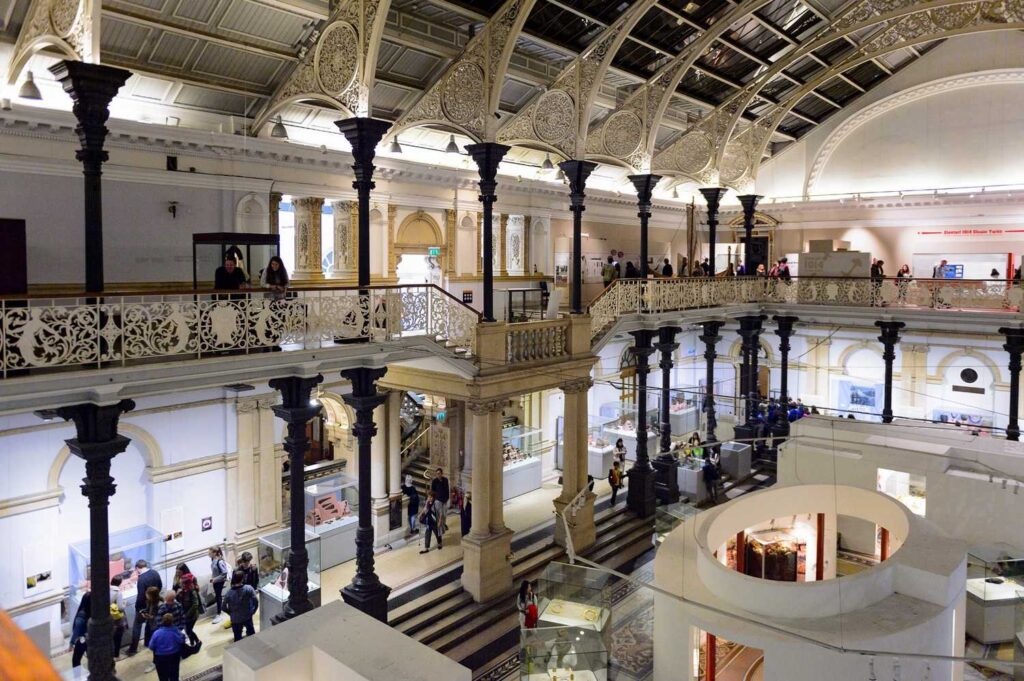
Spread across several sites in Dublin (and one in County Mayo), the National Museum of Ireland is a must-visit for anyone curious about the country’s ancient past, decorative traditions, natural wonders, or rural life. Each branch offers a unique focus—from glittering prehistoric gold and Viking artifacts to historic weaponry and folklore. Best of all, admission to all branches is free, making it an ideal stop for travelers seeking rich cultural experiences
🌟 Highlights of the National Museum of Ireland
• 🏺 Archaeology (Kildare Street, Dublin)
Delve into Ireland’s ancient history with exhibits that span from prehistoric times through the Viking era. Marvel at Bronze Age gold, Iron Age bog bodies, the exquisite Tara Brooch, and medieval treasures like the Ardagh Chalice.
• 🪑 Decorative Arts & History (Collins Barracks, Dublin)
Located in a historic former army barracks, this museum explores Irish political and military history alongside beautiful collections of furniture, silver, ceramics, fashion, and design. Key exhibits include Soldiers and Chiefs and Proclaiming a Republic, which examines the 1916 Easter Rising.
• 🦴 Natural History (Merrion Street, Dublin)
Affectionately known as “The Dead Zoo,” this Victorian-era museum features over 10,000 taxidermy specimens and fossils. Learn about Ireland’s native species and explore global wildlife in a beautifully preserved 19th-century setting.
• 🌾 Country Life (Castlebar, County Mayo)
Focusing on rural Irish life from the 1850s to 1950s, this museum presents everyday artifacts, folk traditions, crafts, and agricultural tools that offer a window into the lives of Irish communities from past centuries.
🚶♂️ How to Get There
• Kildare Street (Archaeology): A short walk from Trinity College and St. Stephen’s Green.
• Collins Barracks (Decorative Arts): LUAS Red Line to Museum stop.
• Merrion Street (Natural History): Close to Leinster House and the National Gallery.
• Castlebar (Country Life): Located in western Ireland, accessible by car or regional train.
🕒 Visitor Information
• Opening Hours:
Tuesday–Saturday: 10:00 AM – 5:00 PM
Sunday & Monday: 1:00 PM – 5:00 PM
(Closed on major public holidays)
• Recommended Visit Duration:
1–2 hours per site; more if you’re a museum enthusiast.
💡 Travel Tips
• 🎧 Take advantage of free audio guides or guided tours when available.
• 🗓️ Visit midweek to enjoy quieter galleries.
• 📸 Photography is allowed in most areas (no flash).
• 🎒 Save time by combining visits—Archaeology and Natural History branches are just a few blocks apart.
• 🧭 Check the official museum website for current events, special exhibitions, and holiday hours.
🌟 Final Thoughts
The National Museum of Ireland offers one of the most accessible and rewarding cultural experiences in Dublin. With its diverse themes and carefully curated exhibits, it’s an ideal place to deepen your understanding of Ireland’s identity—from ancient myths to modern movements. Whether you’re tracing Celtic craftsmanship or observing preserved wildlife, this free, immersive journey is well worth your time.
Merrion Square Park
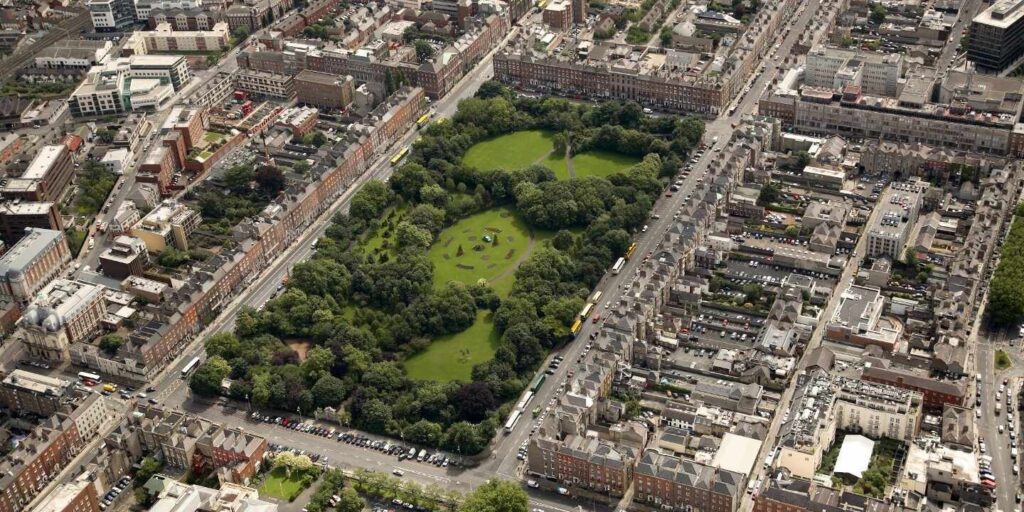
Nestled in the heart of Dublin’s historic Georgian quarter, Merrion Square Park is a beautifully landscaped garden square surrounded by grand 18th-century townhouses. Once home to literary greats and political leaders, today it offers a tranquil escape from the city’s bustle—blending art, nature, and history in one graceful setting. With its lush lawns, vibrant flowerbeds, and intriguing sculptures, Merrion Square Park is a must-visit for those seeking serenity, inspiration, or a quiet picnic in the Irish capital.
🌟 Highlights of Merrion Square Park
• 📝 Oscar Wilde Memorial
Visit the witty and whimsical statue of Oscar Wilde, who grew up just across the street. The monument features Wilde reclining on a rock, surrounded by stone pillars etched with some of his most famous quotes.
• 🎨 Sculpture Trail
Discover over a dozen public artworks scattered throughout the park—including pieces by notable Irish artists and tributes to literary and political figures.
• 🌸 Beautiful Gardens
Enjoy manicured lawns, colorful floral displays, and mature trees that offer shade and seasonal beauty. It’s a favorite spot for locals and visitors alike to unwind with a book or coffee.
• 🐿️ Family-Friendly Atmosphere
With open grassy spaces and pathways perfect for strollers or young adventurers, it’s a calm and welcoming place for families.
• 🖼️ Sunday Open-Air Art Market
On weekends, local artists display and sell their work along the park’s perimeter railings—a beloved tradition that adds charm and color to your visit.
🚗 How to Get There
• On Foot:
Just a short walk from Trinity College, Grafton Street, and the National Gallery of Ireland.
• By Public Transport:
Served by numerous Dublin Bus routes. The nearest Luas stop is Dawson Street (Green Line).
• By Bike:
DublinBikes rental stations are located nearby for easy access.
🕒 Visitor Information
• Opening Hours:
Open daily from early morning until dusk (exact times vary by season).
• Entry Fee:
Free admission.
• Recommended Visit Duration:
Spend 30 minutes to an hour enjoying the park, or longer if you’re attending an event or relaxing with a picnic.
💡 Travel Tips
• 📸 Perfect for Photography:
The Oscar Wilde statue and Georgian façades make for great photo opportunities—especially in spring when flowers bloom.
• 🧺 Bring a Picnic:
There are benches and grassy areas ideal for a peaceful outdoor meal.
• 🖼️ Pair With Nearby Museums:
Combine your visit with the National Gallery, Natural History Museum, or Little Museum of Dublin, all just steps away.
• 🌦️ Check the Weather:
Like much of Dublin, the weather can change quickly—carry an umbrella or light jacket just in case.
Merrion Square Park offers a blend of Dublin’s literary legacy, elegant design, and community spirit. Whether you’re following in Oscar Wilde’s footsteps, admiring Irish art, or simply enjoying some quiet greenery, it’s a serene and soulful stop that adds a touch of poetic beauty to your Dublin adventure.
Howth Village
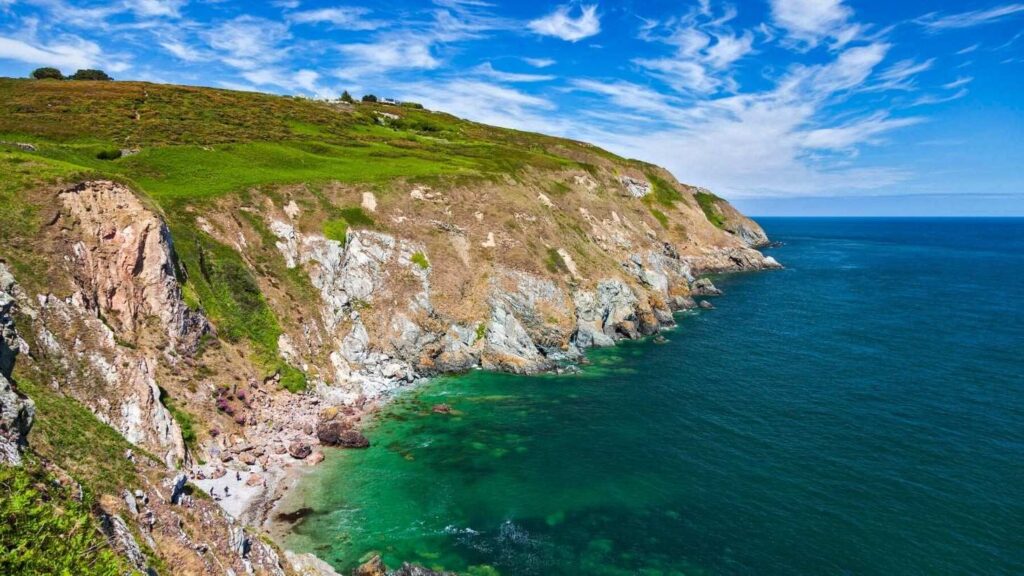
Nestled on a scenic peninsula north of Dublin city, Howth Village is a charming fishing village famed for its fresh seafood, stunning harbor views, and rugged coastal walks. Combining old-world charm with vibrant local culture, Howth offers visitors a refreshing seaside escape filled with history, nature, and delicious flavors.
🌟 Highlights of Howth Village
• ⚓ Howth Harbour & Pier
The bustling harbor is the heart of the village where colorful fishing boats dock alongside luxury yachts. Stroll the pier for panoramic views of Dublin Bay, watch fishermen at work, or enjoy a boat tour to spot seals and seabirds.
• 🐟 Fresh Seafood & Dining
Howth is renowned for its seafood. From casual fish-and-chips shops to upscale restaurants, indulge in freshly caught crab, oysters, mussels, and other local delicacies.
• 🌿 Howth Cliff Walks
Explore a network of scenic trails hugging the coastline, offering breathtaking views of cliffs, sea stacks, and sometimes even dolphins. Popular routes include the Howth Head Loop and the path to Baily Lighthouse.
• 🏛️ Howth Castle & Grounds
Dating back to the 14th century, Howth Castle and its estate (privately owned but occasionally open for events) add a touch of historic grandeur. Nearby, the National Transport Museum showcases vintage vehicles.
• 🛍️ Village Shops & Market
Browse quaint boutiques, art galleries, and weekend markets selling crafts, local foods, and souvenirs—perfect for unique gifts and mementos.
🚗 How to Get There
• By DART (Train):
Frequent trains from Dublin city center take about 30 minutes to Howth station, a short walk from the village.
• By Car:
Drive via the R105 coastal road; parking is available but can fill up on weekends.
• By Bus:
Several Dublin Bus routes serve Howth from the city.
🕒 Visitor Information
• Best Time to Visit:
Spring through early autumn for pleasant weather and outdoor activities. Summer brings lively festivals and markets.
• Entry Fees:
Most of Howth Village is free to explore. Entry to Howth Castle is usually restricted but check for special openings.
• Recommended Visit Duration:
Half a day to a full day, depending on how much you hike, dine, and shop.
💡 Travel Tips
• 🥾 Wear comfortable shoes for cliff walks and uneven paths.
• 🎣 Visit the harbor early morning for a glimpse of fishing activity.
• 🍽️ Book popular seafood restaurants in advance during peak season.
• 📸 Bring a camera for stunning coastal and village scenes.
• 🐦 Birdwatchers will enjoy spotting seabirds, especially around the cliffs.
Howth Village is a perfect blend of natural beauty, rich maritime heritage, and lively local culture—all just a short trip from Dublin. Whether you’re savoring seafood by the sea, hiking scenic coastal trails, or simply soaking in the village’s laid-back atmosphere, Howth offers a rejuvenating taste of Ireland’s rugged east coast.
📝 Local Travel Tips
- Tipping: Generally 10–15% in restaurants if service is good; not expected in pubs.
- Weather: Pack layers and a waterproof jacket—Dublin’s weather is famously changeable.
- Public Transport: Get a Leap Card for easy and discounted travel across buses, trams, and trains.
- Language: English is dominant, but a few Irish phrases add a special local flavor.
✨ Final Thoughts
Dublin is a city that embraces you with its warmth, wit, and stories. Whether you’re exploring medieval castles, sipping a perfectly poured pint, or listening to a traditional ballad in a cozy pub, Dublin invites you to create memories full of laughter and discovery.
There’s magic in its streets, charm in its people, and history at every turn—ready for you to explore. So pack your bags, bring your curiosity, and let Dublin’s spirit welcome you home.

I’m Shreyash Mhashilkar — a full-stack developer by profession, and a passionate explorer of the future at heart.
With a strong foundation in both front-end and back-end , I spend my days building websites and applications that are not just functional, but scalable, intuitive, and user-focused.

